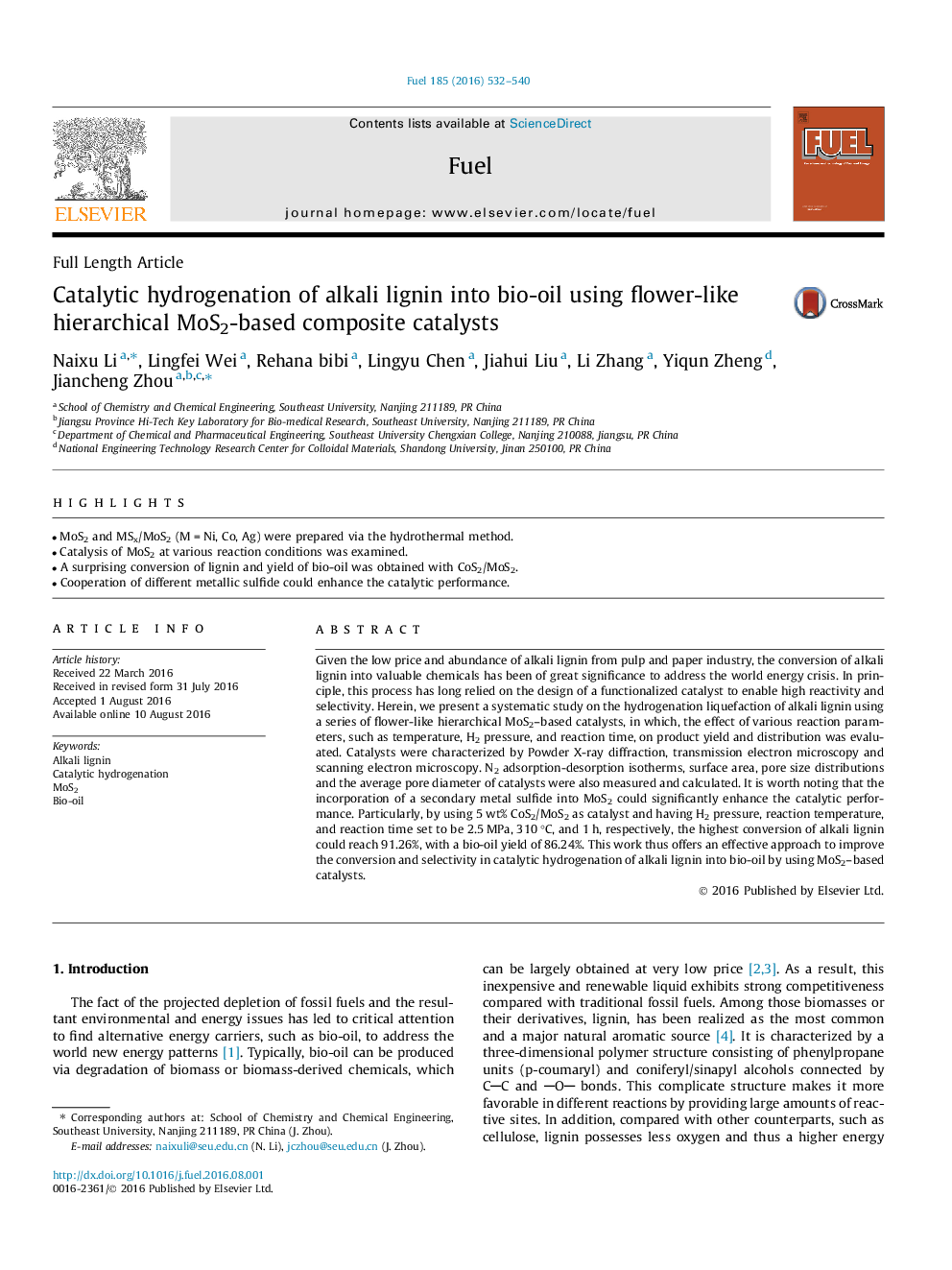| Article ID | Journal | Published Year | Pages | File Type |
|---|---|---|---|---|
| 6632828 | Fuel | 2016 | 9 Pages |
Abstract
Given the low price and abundance of alkali lignin from pulp and paper industry, the conversion of alkali lignin into valuable chemicals has been of great significance to address the world energy crisis. In principle, this process has long relied on the design of a functionalized catalyst to enable high reactivity and selectivity. Herein, we present a systematic study on the hydrogenation liquefaction of alkali lignin using a series of flower-like hierarchical MoS2-based catalysts, in which, the effect of various reaction parameters, such as temperature, H2 pressure, and reaction time, on product yield and distribution was evaluated. Catalysts were characterized by Powder X-ray diffraction, transmission electron microscopy and scanning electron microscopy. N2 adsorption-desorption isotherms, surface area, pore size distributions and the average pore diameter of catalysts were also measured and calculated. It is worth noting that the incorporation of a secondary metal sulfide into MoS2 could significantly enhance the catalytic performance. Particularly, by using 5 wt% CoS2/MoS2 as catalyst and having H2 pressure, reaction temperature, and reaction time set to be 2.5 MPa, 310 °C, and 1 h, respectively, the highest conversion of alkali lignin could reach 91.26%, with a bio-oil yield of 86.24%. This work thus offers an effective approach to improve the conversion and selectivity in catalytic hydrogenation of alkali lignin into bio-oil by using MoS2-based catalysts.
Related Topics
Physical Sciences and Engineering
Chemical Engineering
Chemical Engineering (General)
Authors
Naixu Li, Lingfei Wei, Rehana bibi, Lingyu Chen, Jiahui Liu, Li Zhang, Yiqun Zheng, Jiancheng Zhou,
